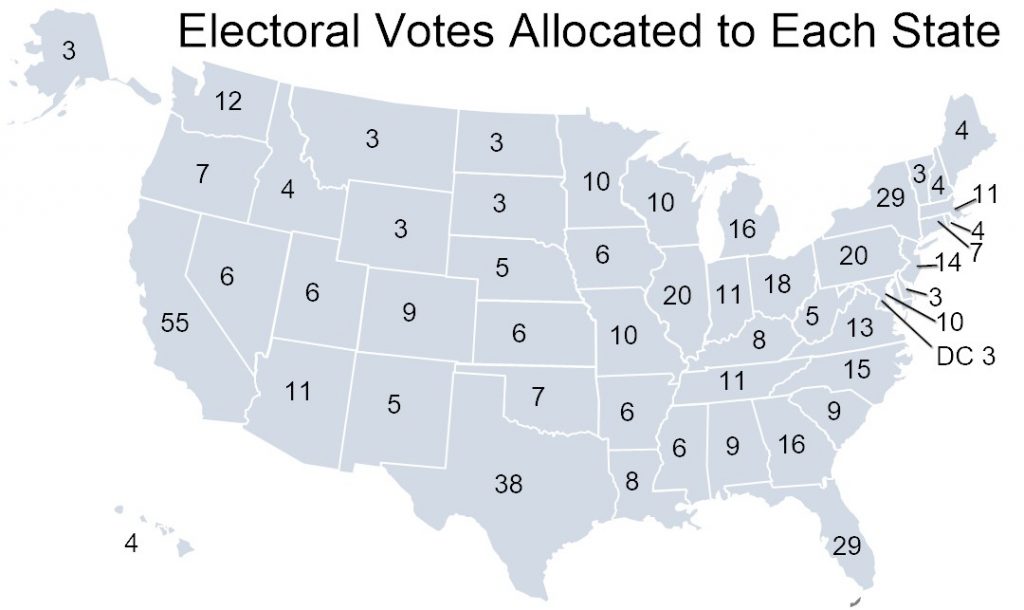November 30, 2020
Nominating Electors is part of ESPC’s How Does the Process Work? Series
The Electoral College is a unique method for indirectly electing the president of the United States. It was established by Article II, Section 1, Clause 2 of the U.S. Constitution and modified by the 12th and 23rd Amendments.
The Electoral College consists of a total of 538 members, one for each U.S. senator and representative, and three additional electors representing the District of Columbia. Each state has a number of electoral votes equal to the combined total of its congressional delegation, and each state legislature is free to determine the method it will use to select its own electors.
Currently, all states select electors through a popular vote (although how that vote works can differ), but that was not always the case throughout American history. In many states, the state legislature selected electors, a practice which was common until the mid-1800s.
Q: How and when are electors chosen?
A: Spring and Summer 2020: Nomination of Electors. The political parties in each state nominate their electors. Parties and states have different ways of going about this, but a party’s presidential electors are generally loyal or consistent party members. The parties want to be sure they can rely on their electors to cast their votes for the party’s nominee for president.
Q: How many electors does each state have?

Heard of “faithless electors” and want to know what they are, what the Supreme Court of the US has to say about them, and how the Wyoming Statute deals with them? Click here!
Curious about the canvassing and ballot certification process that happens post-election day? Click here!
Wondering where the Electoral College came from—and why we still have it? Here are three good places to start.
